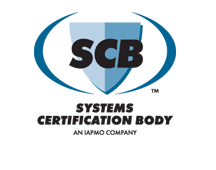For Optimal Comfort and Productivity, Water is the Natural Choice
Hydronic systems increase building net income because:
• Hydronic systems provide the highest level of occupant comfort
• Comfortable employees are more productive
• Concealed HVAC components reduce distractions and sound
• Building value potential increases
• Hydronic Systems respond to all loads saving energy
On a building’s exterior, hydronic systems reduce the effect of Mother Nature on equipment performance. Inside, occupant comfort is delivered. Increases in occupant productivity are hard to quantify, but by installing a hydronic HVAC system to address temperature, humidity and indoor air quality, you're on the path to increased productivity.
The fact is, when we’re comfortable, we’re productive. Being too warm or too cool is a distraction and tends to lead us away from the task at hand. Hydronic systems respond to building, equipment, ventilation, and hot water loads. True comfort is reached when the occupant is blissfully unaware of the systems at work within the building; they’re neither hot, nor cold. Their skin is not too dry, nor too humid. Ideally, they can’t hear or feel the delivery mechanism at work. This is one of many areas where hydronic systems have a major advantage over other technologies.
For more than 100 years, hydronic systems have been regarded as the premium comfort solution. To understand how hydronic systems are inherently more comfortable than other types of HVAC systems, it’s important to understand that they deliver energy in a unique way. VRF (variable refrigerant flow) and forced-air systems heat or cool by blowing large quantities of air around an occupied space to maintain set point temperatures.
Air circulation has a significant impact on occupant comfort because it causes evaporative cooling on the skin. It’s also a distraction, especially for occupants sitting near a unit or duct grille.
In contrast, hydronic radiant heating and cooling uses substantially less air movement, resulting in much higher comfort levels. The simplest way to explain this is to understand that the temperature across a room conditioned by a VRF or air system will vary widely, while the air temperature in a room conditioned by a hydronic system will be far more uniform.
In heating mode, a room equipped with a hydronic radiant system that’s set at 68°F often “feels like” 72°F, and in cooling mode, 78°F “feels like” 72°F. This level of comfort can only be achieved with a hydronic radiant system because comfort is delivered in multiple ways directly to the occupant as needed. Lowering set points is proven to save energy.
It’s no secret that comfortable work environments increase productivity, reduce employee turnover and make the space more valuable. Hydronic systems are able to accurately provide simultaneous, cyclical, and stored heating and cooling to multiple zones. Better control over temperature and drafts keeps everyone happy.
Hydronic systems have always provided optimal solutions for occupant comfort in both residential and commercial applications. But that has never been truer than it is today. Modern controls, outdoor air sensors, variable-flow circulation, multi-speed water source heat pumps, modulating boilers and low-temperature terminal units make hydronic systems the most responsive, energy efficient option available, and comfort is still king.
For occupant comfort, building health and bottom line, water always wins. Think hydronic.
For more information, please contact the Radiant Professionals Alliance and the Hydronics Industry Alliance at (877) 427-6601 or info@HIA-C.org
Water-based HVAC Systems Are Naturally:
Hydronic systems use fluid or steam as the medium for the final heat-transfer

































